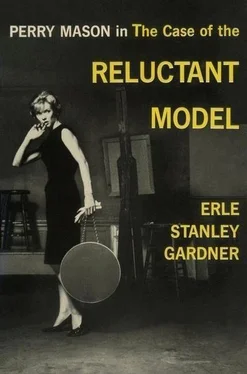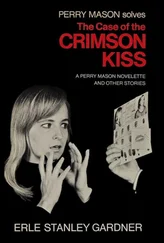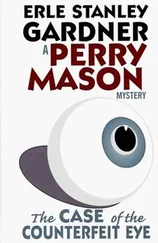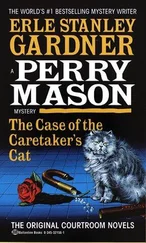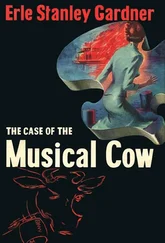“No, they won’t,” Mason said. “They will read about the suit but they won’t remember very much about it except that an art expert said you had been peddling worthless art for thirty-five hundred dollars to a valued customer.”
Rankin frowned, blinked his eyes rapidly several times, then brought them to hard focus on Mason’s face.
“You mean to say I must sit here and let that unspeakable cad go around making statements that no reputable dealer would make? Hang it, Mason! The man isn’t an expert, he’s a dealer, and if you ask me, he’s a damned poor dealer at that!”
“I’m not asking you,” Mason said, “and you’re not making that statement, because the first thing you know Durant might turn around and sue you for defamation of character. Now, you came up here for advice. I’m going to give you that advice. It probably isn’t the advice you want, but it’s the advice you need.
“When you sue a man for defamation of character, in a business way you put your own reputation right out on the line. You have to submit to a deposition and the lawyer on the other side starts asking you questions. Suppose I start asking you those questions first: Did you sell Otto Olney a phoney painting?”
“Absolutely not.”
“How do you know?”
“Because I know the painting. I know the artist. I know his work. I know his style. I know art, Mason. Hang it, I couldn’t stay in business ten minutes if I didn’t. That picture is absolutely genuine.”
“All right,” Mason said. “So, instead of having you sue Durant for half a million dollars’ damages, claiming that he has damaged your reputation, and putting you in the position of going on the witness stand and trying to prove that Durant’s statement was made with malice and that it undermined the confidence of your customers, actual and potential, we go to see Otto Olney.”
“What good does that do?” Rankin asked.
“We get Otto Olney, as the owner of the painting, to sue Durant claiming that Durant has disparaged the value of his picture by making a statement that it was spurious. Olney alleges that he paid thirty-five hundred dollars for the picture, that it was well worth twice that amount or seven thousand dollars, and that the aspersions cast upon the painting by Collin Durant have damaged him in the amount of seven thousand dollars.
“Then,” Mason went on, “people reading the newspapers know that a man with the standing of Otto Olney has accused Durant of being a malicious spite-peddler, that he is incompetent as an art appraiser or he is a liar.
“We get the newspapermen interested, we get a photograph of the picture in question, and we have Olney call in some expert art appraiser who pronounces the picture genuine. Then we have a picture taken of you, the art appraiser and Otto Olney, all standing beside the picture shaking hands, beaming at each other. The general public reading the article will come to the conclusion that Collin M. Durant is a very shady character indeed; that you are a reputable art dealer, that the experts back up your judgment and that your customers are completely satisfied.
“The only thing that is in issue is the authenticity of the painting, not your reputation, not the amount of your damages, not anything that can be dredged up from your background that you might not want to have publicized.”
Rankin blinked his eyes rapidly, thrust his hand into his breast pocket, pulled out a checkbook, said, “It’s a pleasure to work with a real expert, Mr. Mason. Will a thousand dollars be an adequate retainer?”
“A thousand dollars will be about five hundred dollars too much,” Mason said, “depending, of course, on what you want to have done and how serious this matter is.”
“The matter is very serious indeed,” Rankin said. “Collin M. Durant is a wise guy, one of these smart alecks, a know-it-all, a talker. He isn’t content to make acquaintances in the art world and build up his reputation slowly and by merit. He is, instead, bent upon trying to build his own reputation by tearing down the reputations of others. I am not the only one who has been the target of his innuendos and sneering comments, but I am perhaps the only one who has a very definite case in that a certain specific object of art which I sold has been definitely and positively branded as spurious by Durant to a witness who will testify.”
“How do you get along with Olney?” Mason asked. “You sold him this one painting. Have you sold him any more?”
“Only the one. But I have every reason to believe he is very friendly.”
“Why only the one?” Mason asked. “After you make a sale, don’t you try to keep a man as a customer?”
“The point is that Olney is a rather peculiar individual with very definite tastes. At that particular time he wanted one painting and only one painting. Actually he commissioned me to buy that painting if I could find it, and I think he may have commissioned others as well.”
“What’s the painting?” Mason asked.
“It’s a Phellipe Feteet.”
“I’m afraid you’ll have to enlighten me more than that,” Mason said.
“Phellipe Feteet is, or rather was, a Frenchman who went to the Philippines and started painting. His early work was rather mediocre. Then he developed what was to be his forte — pictures of natives in the shade with sunlit backgrounds.
“You may not have noticed it, Mr. Mason, but there are very, very few painters who can get the true effect of sunlight. There are many reasons for this, one of which is that the canvas cannot transmit light; it only uses colors to suggest light. The contrast therefore, between sunlight and shadow is seldom really emphasized in a painting. But in the work of Phellipe Feteet — that is, in his later years — he turned out pictures that were so vivid they have a terrific impact. The illusion of sunlight is so bright it is dazzling. You want to reach for a pair of dark glasses.
“Even studying his pictures, no one knows exactly how he did it. The man had a gift for this type of work. I don’t think there are more than two dozen of his later pictures in existence, and so far only a few people really appreciate the man’s work. But there is a growing sense of appreciation.
“You mention that Olney’s picture was sold for thirty-five hundred dollars and is worth seven thousand. You had better up that latter figure materially. I sold him the picture for thirty-five hundred dollars. I would like to buy it back for ten thousand. I think I could sell it for fifteen. Five years from now it will be worth fifty.”
Mason grinned. “All right,” he said, “there’s your answer. You go and see Otto Olney. You fix things up with him. You get a disinterested art expert to go out there and appraise the painting. You get Olney to sue Durant for disparaging his picture. You have the art expert offer Olney ten thousand dollars for the picture. That makes a story the newspapers can eat up. Olney files the suit. The suit is against Durant. You only come into it as the dealer who sold the picture and whose judgment is vindicated by an independent art expert. The fact that you sold a picture for thirty-five hundred dollars and the trade is now willing to pay ten thousand for it, the fact that the art expert appraises it as being worth three times what you charged for it a few years ago, makes everybody happy.
“The newspapers will want to know who Phellipe Feteet was and you can tell them the story of his pictures and the fact that they are going up in value every day. This will enhance the value of Olney’s painting, will have a tendency to start a new vogue for the Feteet paintings, and Durant will be the one who is behind the eight ball.
“If the newspapers want to interview Durant, all he can do is reiterate his statement that the painting is spurious. At that time his story will give Olney more grounds for a lawsuit, Durant’s opinion will be at variance with the established art appraisers in the country, Olney will have a good cause of action, your damaged reputation won’t enter into the litigation. In fact your reputation will actually be enhanced by all the newspaper publicity.
Читать дальше
